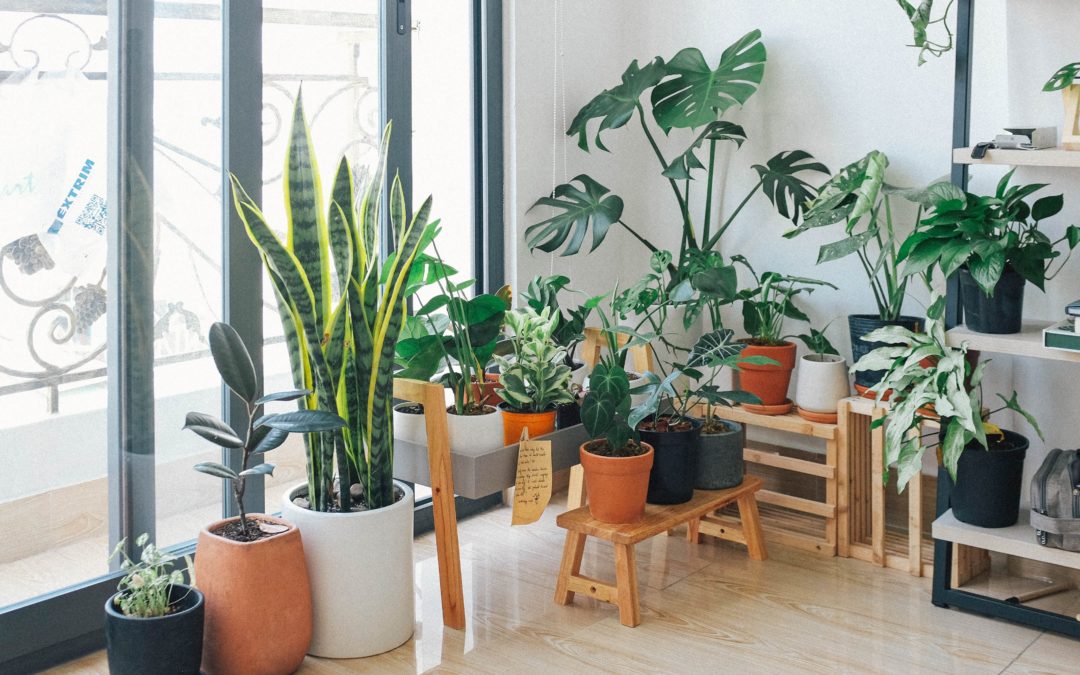Houseplants offer a beautiful and easy way to add life to your space. Making plant design a part of your interior design can create interest, evoke a feeling of calm, and even purify the air! That said, it’s important to choose plants that are right for your space, needs, and lifestyle. Taking time to pick the right plants will ultimately save your houseplants—and save you money! This guide is meant to help you choose houseplants that will fit best in your home.
If You’re New to Houseplants:
These beginner-friendly options are easy to grow and relatively hardy.
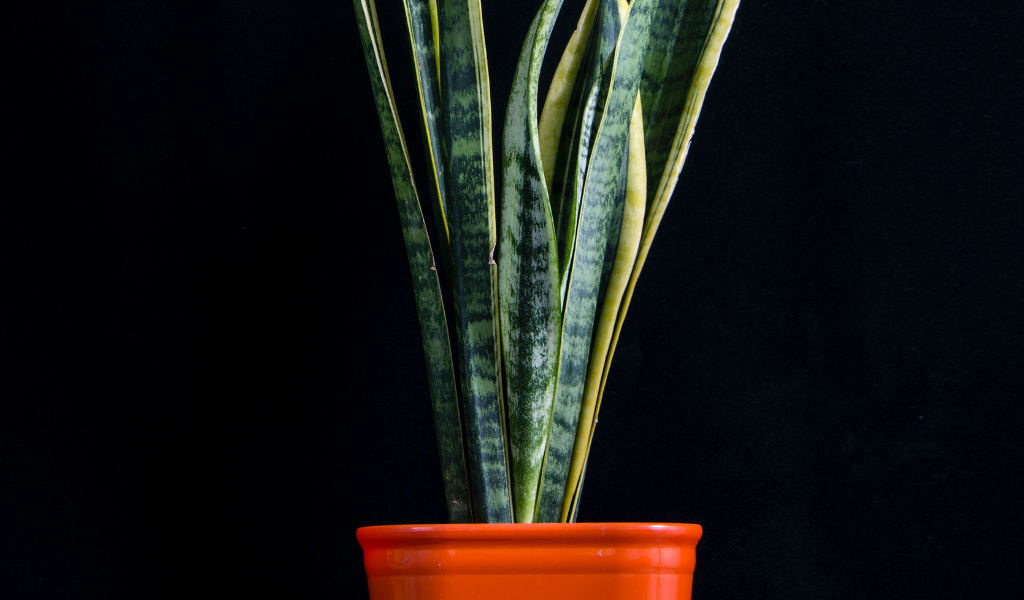
Snake plant:
You’ve likely seen a snake plant before, as its hardy nature makes it a popular choice for office buildings. The snake plant is known for its sword-shaped leaves marked with green bands. It prefers well-lit spaces but doesn’t need frequent watering.

Lucky Bamboo:
Another classic office plant due to its amazing ability to thrive in some of the most negligent conditions, Lucky Bamboo can survive inconsistent watering and poor light. As evidenced by its name, tradition says it brings good luck too!
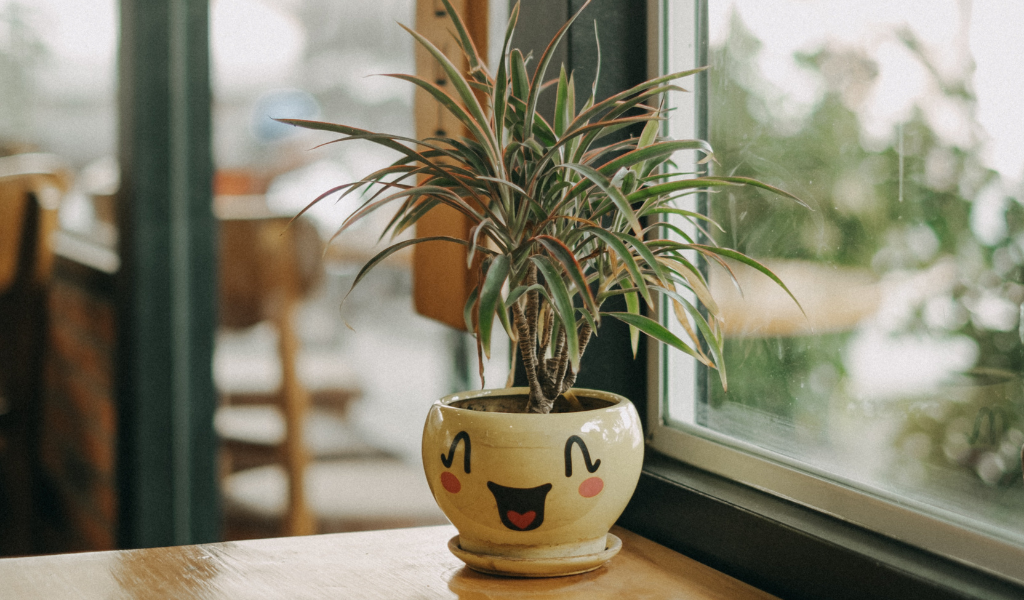
Dragon Tree:
The dragon tree features distinctive red-trimmed leaves and a woody stem. It doesn’t need much care, just watering when the soil becomes dry. An indoor dragon tree can grow up to six feet, making it a great choice for a larger room.
If Your Space Has Low Light:
These are a few of the best indoor plants for a room that doesn’t get much light.
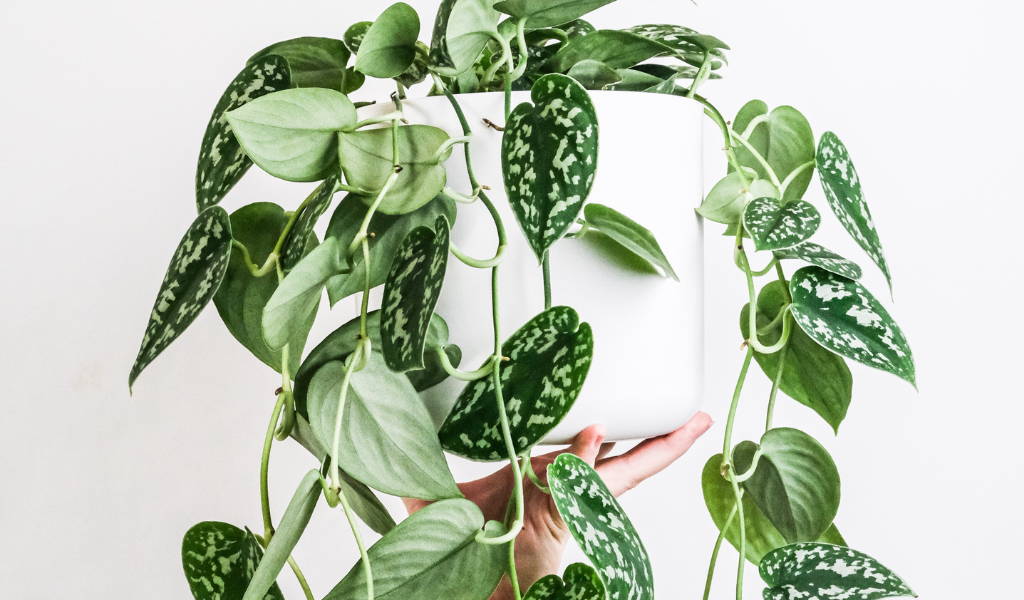
Scindapsus Pictus:
This tough but stylish little plant can weather low light and infrequent watering, requiring a drink only once every 1–2 weeks. If placed in brighter light, it may need more water.
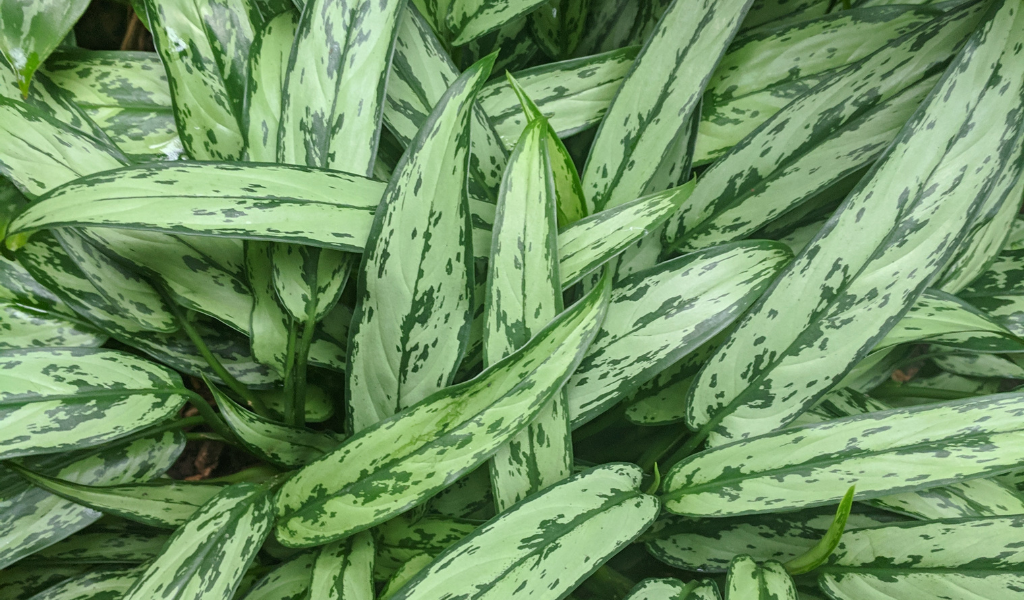
Aglaonema Chinese Evergreen:
This reliable houseplant features a striking two-tone green pattern, is comfortable in low light, can be watered every 7–10 days, and only needs fertilizer every six months to a year.
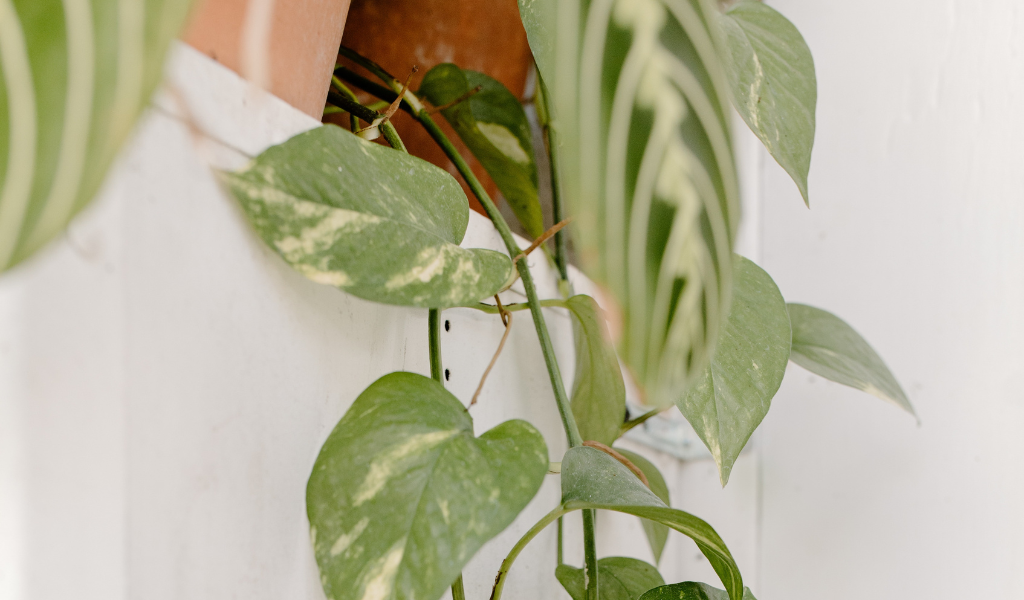
Devil’s Ivy Golden Pothos:
Deriving its name from its ability to grow vines in almost any conditions, this fast-growing plant can be destructive when outdoors but is one of the most beloved indoor houseplants. It usually needs a cup of water per week.
If You’re Looking to Clean the Air:
While houseplants aren’t strong enough to remove all toxins from the air, they can certainly help. Try these indoor plants to help slowly purify the air in your home.
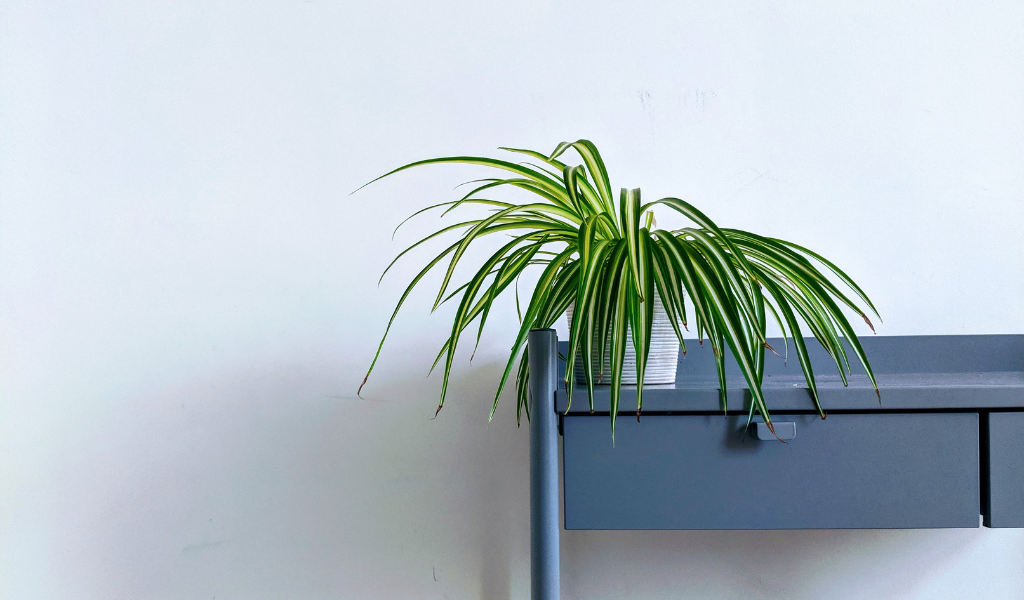
Spider Plant:
The spider plant is known for its ability to remove formaldehyde—which can be found in everything from cigarette smoke to carpets to nail polish—as well as carbon monoxide from the air. It can thrive in partial sunlight and does best when its soil is kept moist.
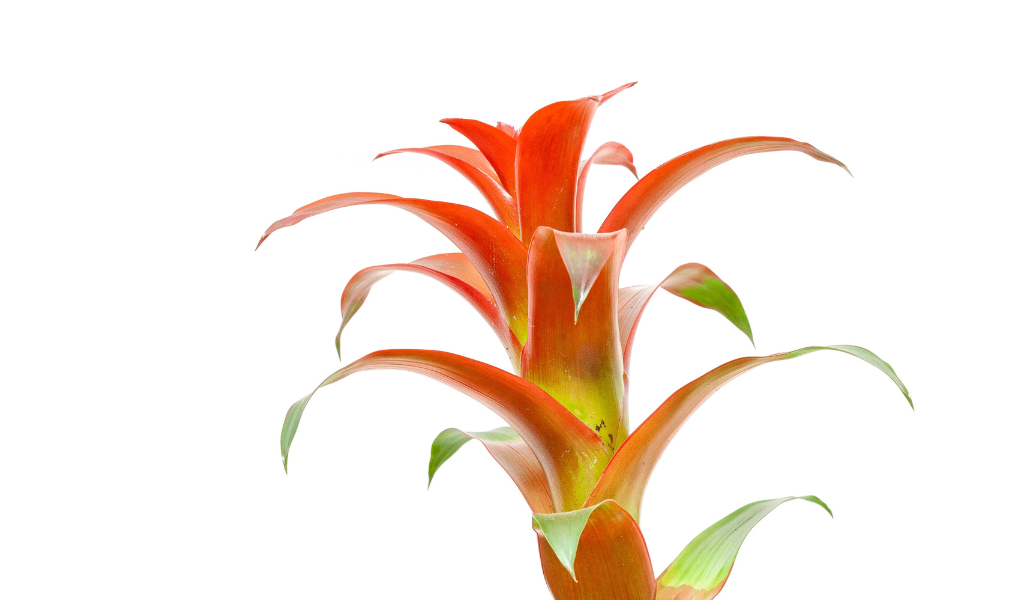
Bromeliad:
This eye-catching houseplant features vibrant leaves and flowers in addition to removing air pollutants. A bromeliad plant likes dry conditions, so make sure it has good drainage and avoid over-watering. It loves bright light, so consider placing it in a window sill or even a room with fluorescent lighting.

Philodendron:
Philodendron’s fast-growing nature and easy care makes it one of the most popular houseplants. Philodendron selloum, heart-leaf, and elephant ear philodendrons are most effective at removing formaldehyde from the air. A philodendron is comfortable in everything from full sun to shade, but does prefer regular watering.
If You Have Pets:
For a pet, a houseplant looks like a fun new toy to chew on. But did you know some common houseplants are actually toxic to pets? Try these pet-friendly options to protect your cat or dog and give you peace of mind:
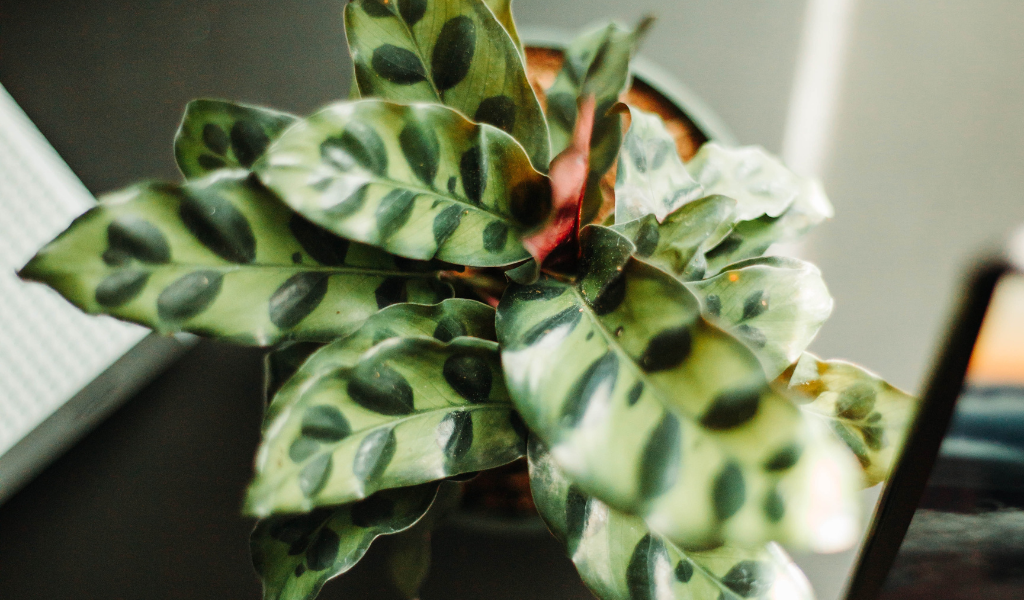
Rattlesnake Plant:
In addition to being pet-friendly, the rattlesnake plant—notable for the pop of purple on the underside of its leaves—is quite happy in low-lit areas. This houseplant prefers warmer temperatures and fast-draining soil that only needs watering when dry.
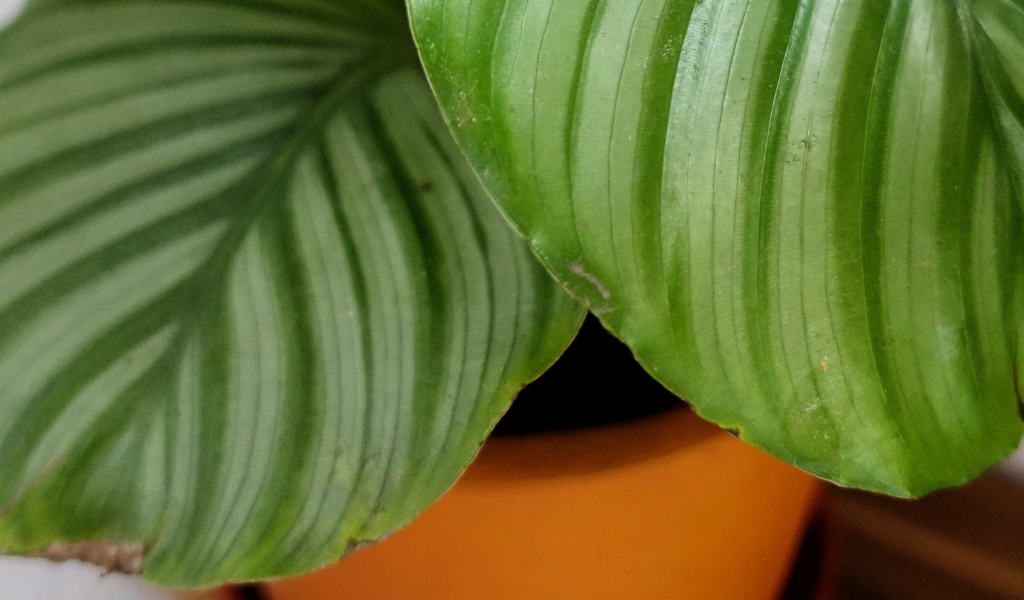
Calathea Orbifolia:
This houseplant is pet-safe and thrives indoors since it prefers shade to sun. It also likes regular watering (plus humidity, so frequent misting is a good idea) and does best in a room with warmer temperatures (above 60 degrees Fahrenheit).
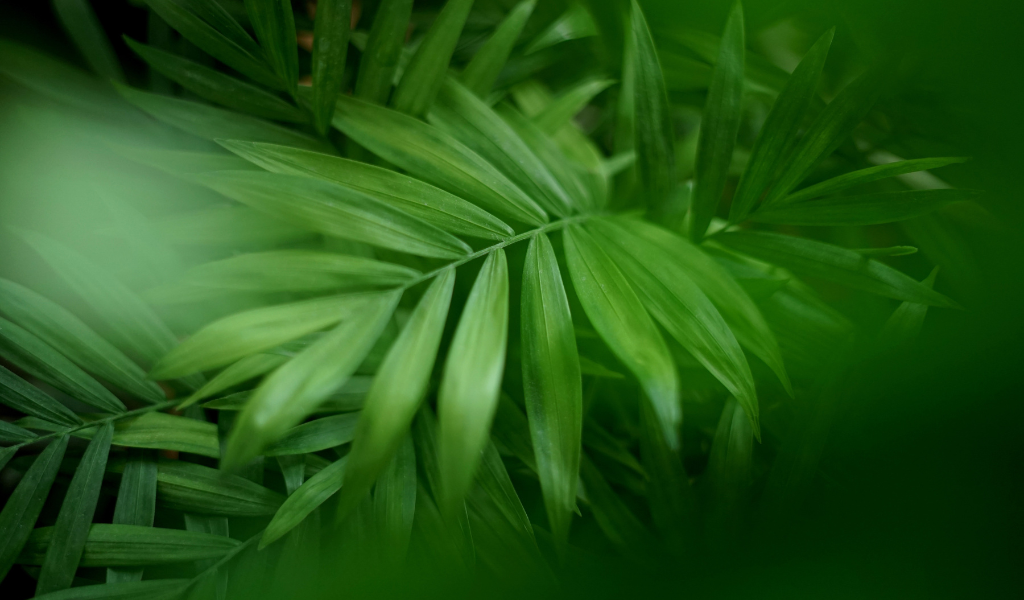
Parlor Palm:
Another pet-friendly houseplant that grows beautifully in low-lit spaces, the parlor palm enjoys a bit of shade and consistently moist soil. It’s a slow grower, but can reach up to four feet tall over time.
Effective plant design can elevate the look and feel of a space, making it both stylish and welcoming. Unlike other types of decor, however, houseplants require consistent care that should be compatible with your lifestyle. Hopefully this list helps you begin to find the best indoor plants for you and your home. Reach out if you find yourself wondering what houseplants would be best for your home!


